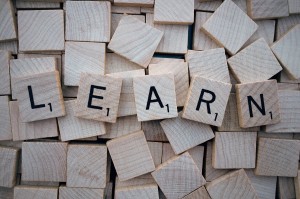
 Become a PowerPoint Guru by Dave Tracy
Become a PowerPoint Guru by Dave Tracy
Learn the methodologies, frameworks, and tricks used by Management Consultants to create executive presentations in the business world.

 Become a PowerPoint Guru by Dave Tracy
Become a PowerPoint Guru by Dave Tracy
 Accelerated pace of technological disruption has forced organizations to change. It has triggered leaders to think of the ways they must adopt to survive in these challenging times.
Accelerated pace of technological disruption has forced organizations to change. It has triggered leaders to think of the ways they must adopt to survive in these challenging times.
Organizations are confronting this scenario by embracing digital technologies. Traditionally, the focus of the organizations in these Transformation initiatives has remained on speed of change. To get the most out of their initiatives, they are making drastic changes, to include:
Digital Transformation programs are launched with huge fanfare, see success early on, but fail to keep the momentum going. The issues that plague the sustainability of these initiatives are typically:
Drivers of change for the Digital Leadership have changed significantly over the years. There is an increased focus on building scale when executing Digital Transformation. Leaders have realized that quick Decision Making is not the only element required for successful Transformation. To achieve its full potential, they need to create differentiated offerings and scale the most viable initiatives across the organization to create value.
Traditional organizations have started following the footsteps of digital disrupters like Amazon and Tesla. They are implementing new digital services and adjusting their operations. However, typical hurdles—e.g., old enterprise systems, bureaucratic red tape, delayed decision making, and segregation between IT and business units—make them slip back into the outdated ways of doing things.
Sustainable Digital Transformation involves building not only the technology infrastructure but also revisiting the operating model. Successful Digital Transformations essentially involve embracing 4 key strategies to enable an ecosystem that encourages change to stick as well as scale:
Let’s delve deeper into these strategies.
Manufacturing and pharmaceutical industries are the major sectors that employ this strategy. The typical state of affairs in organizations implementing this strategy is such that they are in need of developing new digital capabilities from scratch to tackle nimble rivals who are churning out novel value propositions using digital tech. These companies are burdened by dated tech infrastructure, sluggish decision making, and dated business models. The risk of disruption to these businesses is growing but it hasn’t challenged them to transform drastically.
To them, building a digital foundation warrants acquiring novel foundational capabilities. Their approach should be to start implementing and managing small changes one step at a time. For instance, building a smart technology architecture with advanced Big Data, Analytics, and predictive modeling capabilities. This should be followed by testing prototypes of the new model to prove their worth before implementing a full-blown execution.
This strategy has gained traction most in organizations from the Consumer Products industry. These organizations are typically marred by scores of fragmented IT systems running in different parts of the organization. There is a general inability to prioritize the most viable projects and scale them. The need to reform and rapid deployment of Digital Infrastructure is critical for survival.
The approach to Digital Transformation in these organization should be to establish a central management position to manage the initiative and streamline dispersed technology landscape. This entails revising the technology infrastructure and operating model, deploying a unified IT platform for gathering and storing customer data, establishing a common data repository accessible to all units to recognize customers’ needs, and creating a culture that encourages innovation, acts on creative ideas, and refines them through experimentation and advanced tools.
Interested in learning more about the other strategies to enable Digital Transformation? You can download an editable PowerPoint on Sustainable Digital Transformation here on the Flevy documents marketplace.
You can download in-depth presentations on this and hundreds of similar business frameworks from the FlevyPro Library. FlevyPro is trusted and utilized by 1000s of management consultants and corporate executives. Here’s what some have to say:
“My FlevyPro subscription provides me with the most popular frameworks and decks in demand in today’s market. They not only augment my existing consulting and coaching offerings and delivery, but also keep me abreast of the latest trends, inspire new products and service offerings for my practice, and educate me in a fraction of the time and money of other solutions. I strongly recommend FlevyPro to any consultant serious about success.”
– Bill Branson, Founder at Strategic Business Architects
“As a niche strategic consulting firm, Flevy and FlevyPro frameworks and documents are an on-going reference to help us structure our findings and recommendations to our clients as well as improve their clarity, strength, and visual power. For us, it is an invaluable resource to increase our impact and value.”
– David Coloma, Consulting Area Manager at Cynertia Consulting
“FlevyPro has been a brilliant resource for me, as an independent growth consultant, to access a vast knowledge bank of presentations to support my work with clients. In terms of RoI, the value I received from the very first presentation I downloaded paid for my subscription many times over! The quality of the decks available allows me to punch way above my weight – it’s like having the resources of a Big 4 consultancy at your fingertips at a microscopic fraction of the overhead.”
– Roderick Cameron, Founding Partner at SGFE Ltd
 In this era of rapid change only organizations that are evolving and continuously learning can flourish. Successful organizations discover how to tap their people’s commitment and capacity to learn at all levels.
In this era of rapid change only organizations that are evolving and continuously learning can flourish. Successful organizations discover how to tap their people’s commitment and capacity to learn at all levels.
A Learning Organization is a place where people continually expand their capacity to create the results they truly desire, where new ideas and thinking are nurtured, and where people are continually learning to see the whole together. A Learning Organization is established on the principles of innovation, free flow of ideas, and a consistent focus on transforming the ways of doing business.
Learning Organizations adopt 5 distinct practices to succeed, which form the “building blocks” of such organizations:
Five key characteristics distinguish a Learning Organization from the rest. These attributes serve as the guiding principles and practices that these organizations study and integrate into their DNA. A blend of these core characteristics helps organizations adopt a more interconnected way of thinking:
By adopting and mastering these core characteristics organizations become communities that employees can commit to. Let’s, now, discuss the first 3 characteristics in detail.
Systems thinking allows people to study businesses as bounded objects. Learning Organizations possess information systems to assess the performance of the organization and its components as a whole. Systems thinking states that all the characteristics must be present together in an organization for it to be a Learning Organization. However, some experts consider that the characteristics of a Learning Organization are gradually acquired, rather than developed simultaneously.
Personal mastery is an individual’s commitment to learning. It is about becoming more productive by applying skills to work in the most constructive manner. It involves clarification of focus, vision, and to interpret reality objectively. Training, development, and continuous self-improvement are the sources of individual learning.
Mental models include assumptions and generalizations retained by individuals and organizations, which go undetected, as mental models limit peoples’ observations. Learning Organizations need to identify and challenge these models. For a learning environment it is important to replace confrontational attitudes with an open culture that promotes inquiry and trust, introduce mechanisms for uncovering and assessing organizational theories of action, and discard any unwanted values.
Productivity and competitiveness relies on knowledge generation and processing. Therefore, organizations not only have to invest in new machinery and systems to improve production, but also focus on knowledge generation and learning of their people. Learning Organizations require a new view of leadership. Leaders in Learning Organizations create workplaces that help people keep building their capabilities to understand complexity, clarify vision, and improve shared mental models.
Peter Senge describes the 3 key qualities of leaders to be critical in leading the Learning Organization:
The key roles of a leader as a designer in Learning Organizations is designing the policies, strategies, and systems. The designer also outlines the governing ideas — the purpose, vision, and core values — for the people. They plan and develop the learning processes whereby people throughout the organization can deal productively with the critical issues they face, and cultivate personal mastery of the team members in the desired learning disciplines.
According to Peter Senge, the notion of management in this modern age should be replaced by “stewardship” — whereby control and consistency should be swapped with partnership and choice. The leader as a steward tells ‘purpose stories’ about their organization and relate those stories. They explain the reasons of the tasks that are required to be performed, the need for the organization to evolve, and the purpose of evolution. They learn to listen to other people, involve them, and develop vision — both individual and shared.
Interested in learning more about the key attributes of leaders and core characteristics of a Learning Organization? You can download an editable PowerPoint on Learning Organization Primer here on the Flevy documents marketplace.
You can download this and hundreds of other consulting frameworks and consulting training guides from the FlevyPro library.
Error: Twitter did not respond. Please wait a few minutes and refresh this page.